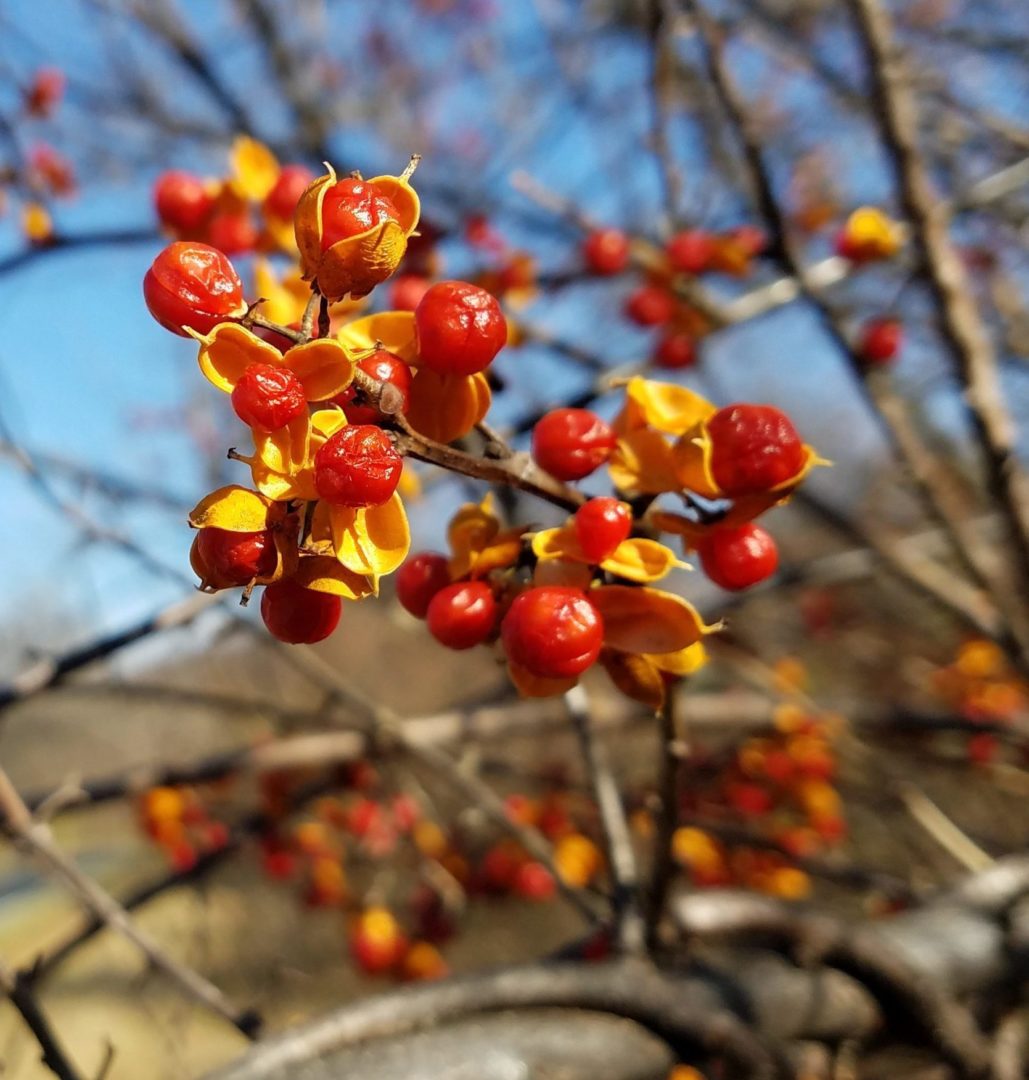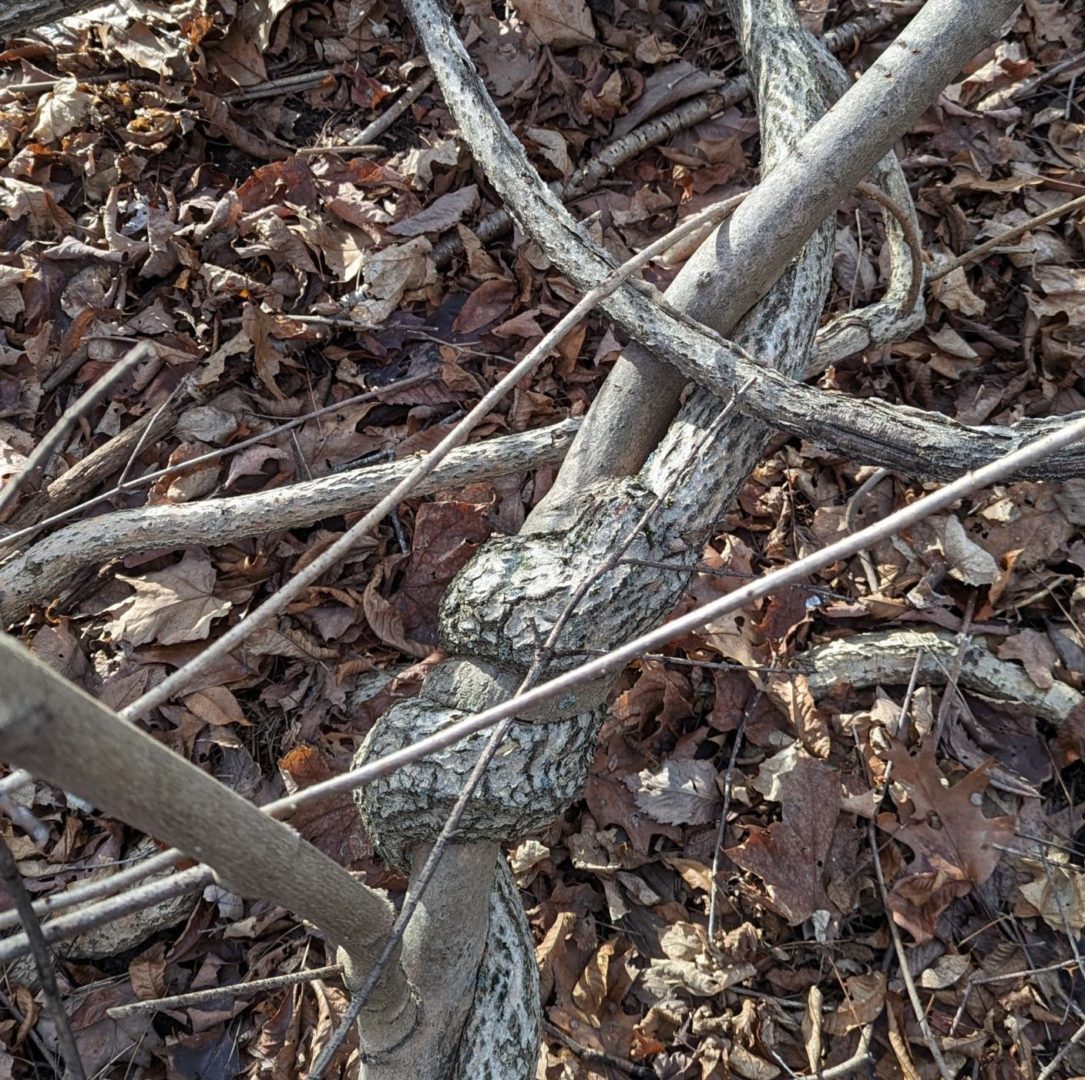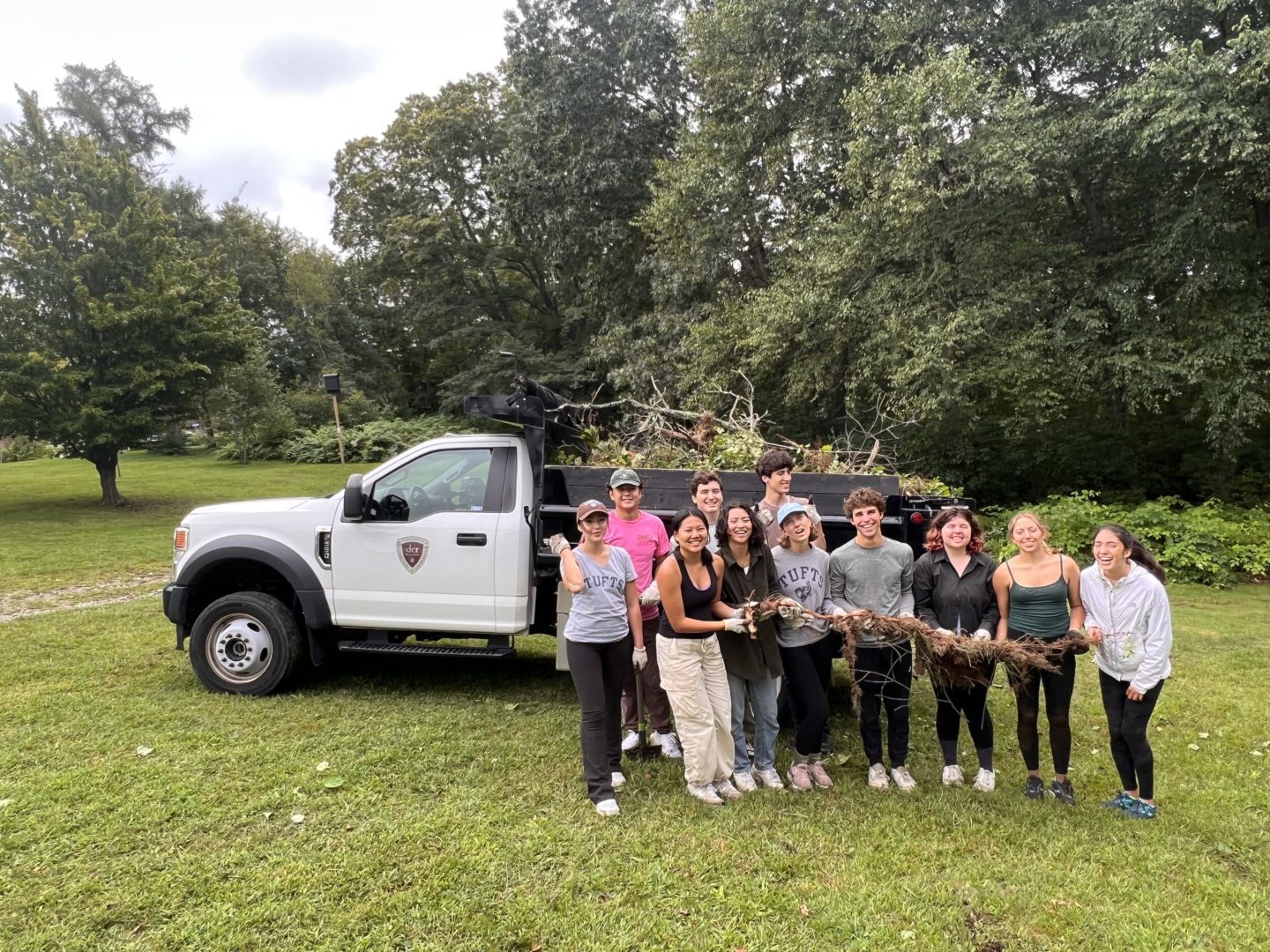National Invasive Species Awareness Week (NISAW) is February 26 to March 3, 2024.
To recognize NISAW, we will be releasing a blog post every day this week on a different invasive plant species commonly found throughout the Fells.
Invasive plants are non-native plants that were introduced to our area from another region of the world. The elements that kept the non-native plant populations in check in its home region (e.g. disease, competition, predators) are no longer present once they are introduced to this new region. This means that the plant can grow out of control, rapidly outcompete native plants, and threaten native biodiversity. This threat to our native habitats and biodiversity makes management of invasives all the more important.
Read on to learn more about today’s invasive plant: Asiatic bittersweet.

Asiatic bittersweet (Celastrus orbiculatus)
Similar to burning bush’s brilliant red leaves, Asiatic bittersweet hosts impressive features that stand out in the fall. Bittersweet’s fruits ripen in the fall and turn yellow. They later split open to reveal a classic red inside.
The woody vine was brought to the United States in the mid-1800s as a landscaping and ornamental plant. The vines and the berries that it produced were used as decorations like door wreaths to add festive autumn colors to people’s homes. But the decorative berries are where some of the problem lies.
When the wreaths were no longer wanted, they were disposed of and the beautiful berries were spread. Birds could eat the berries right off the vine and spread the seeds far and wide. Mammals will not eat any other part of the plant, outside of birds eating the plant’s berries. In its native habitat, animals would eat more parts of the bittersweet plants, which would help keep its populations in check.

As a vine, Asiatic bittersweet wants to climb up other plants for support. This often causes damage to the plant it finds itself ascending. One advantage that many invasive plant species have is that they leaf out sooner than native plants. For bittersweet, this means blocking sunlight from the tree or shrub that it has climbed. In addition to negatively impacting the canopy, bittersweet can also strangle the plants that it uses as support. Some bittersweet vines can grow up to 10 inches in diameter and become a heavy weight on the tree they are climbing.
Join us tomorrow to learn more about our next invasive plant: Multiflora rose.
Want to help us combat invasive plants like bittersweet? Join us for a volunteer day by signing up on our calendar here!
